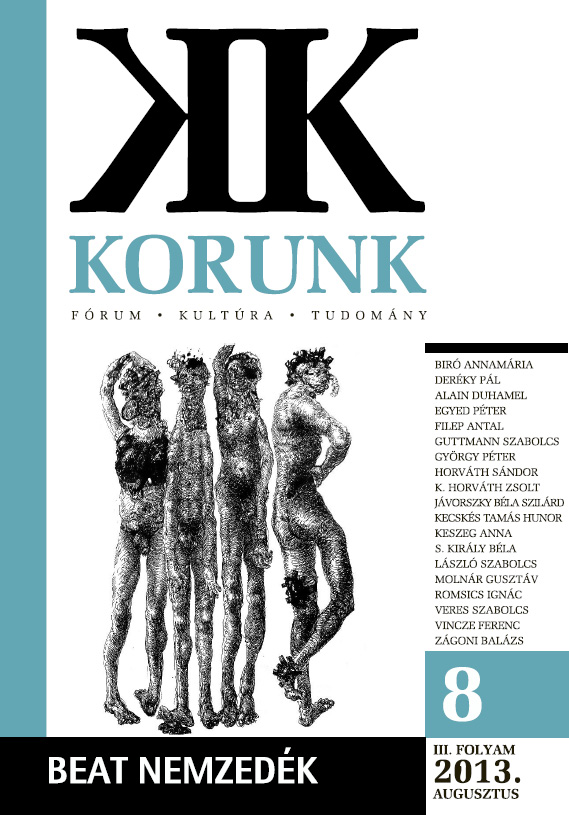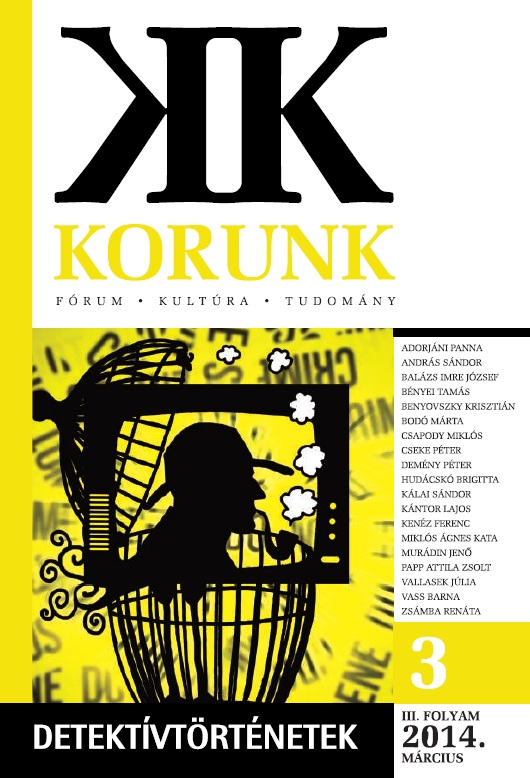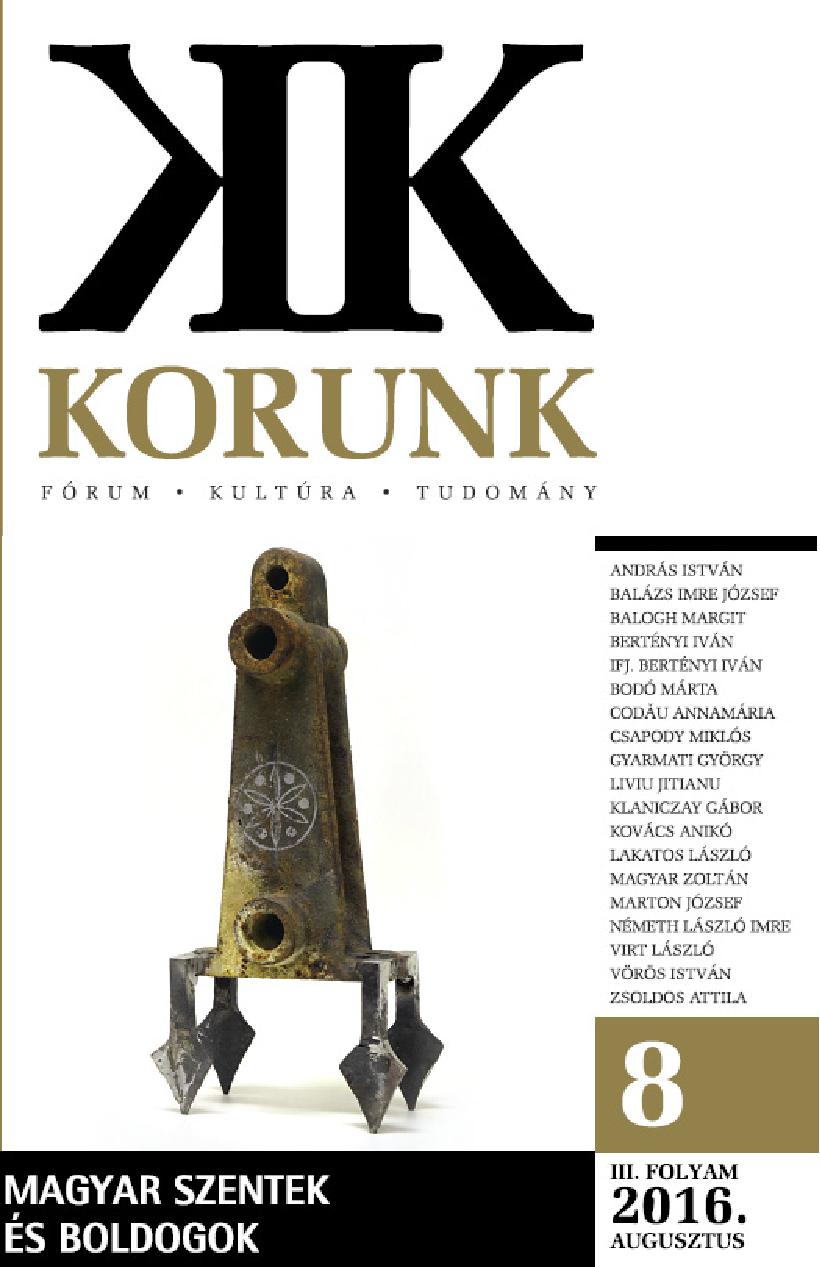
We kindly inform you that, as long as the subject affiliation of our 300.000+ articles is in progress, you might get unsufficient or no results on your third level or second level search. In this case, please broaden your search criteria.


The first part of this paper is dedicated to the definition of the agreement to exchange (permutatio) and emphasizes the difference, made by Roman lawyers, between exchange (barter) and sale (emptio-venditio). The second part analyses Byzantine legal sources that mention this old contract, while the third part is dedicated to Serbian legal documents. In Serbian legal documents the exchange was mentioned as the agreement between a monarch and a monastery or a natural person (individual), concerning donations that were given to the Church.
More...
In the present study, the homily Ὁμιλία πρὸς μοναζούσας· εἰς τὸ ῥητὸν τοῦ θείου Παύλου, τό, εὐσχημόνως περιπατεῖτε by the patriarch of Constantinople Kallistos I, given by two mss. codices of Mt. Athos, the codex 8 of Hilandar monastery (ff. 324r-329r) and the codex 1074 of Panteleemon monastery (ff. 206v-210v), is edited for the first time. In the edited homily patriarch Kallistos addresses to the nuns of a particular monastery (probably in Constantinople). The content of the homily makes it clear that the patriarch had received specific accusations, according to which these nuns had given up the basic principles of monastic life and had been seized with passions totally opposite to the monastic oaths they had taken.
More...
The study presents some newly found inscriptions dated to 1475/1476. They are inscribed on the sanctuary mural paintings in the catholicon of the Holy Virgin at Vitosha monastery (near Sofia). The textual comparisons do not exhibit a serious departure from the established practice of the preceding centuries, but they show some specific approaches to the selection of liturgical quotations. The origin of the text of the scene illustrating The Vision of S. Peter of Alexandria is disclosed in the study. Apparently, this is a derivation from the hagiographic practice. From a linguistic point of view the inscriptions are typical representatives of the west Bulgarian territories. Only ь is used, ж (ѭ) changes into оу (ю), and ѧ (ѩ) into е (ѥ). Furthermore the author maintains that there are some elements connected with transitional linguistic areas in Vardar Macedonia. The textual and linguistic features confirm the fact that the Dragalevci frescoes belong to the artistic production of the Ohrid School from the second half of the 15th century.
More...
Perambulation was a legal act exercised by the king in the Middle Ages. Several surviving charters from the Middle Ages contain descriptions of borders and disputes regarding perambulation. These charters are of major importance for local history, due to the fact that they also mention villages that no longer exist, while also providing descriptions of natural history. In our earliest surviving document, the Establishing Charter of the Tihany Abbey, which was issued by King Andrew I, we find toponyms in Hungarian. By examining the process of perambulation, the author provides a welldefined picture of the legal customs of the medieval Transylvania as well as of its settlements and borders.
More...
In recent years, the Szeklers’ collective nobility has become the subject matter of the historians’ debates again. In response to this, the author examines the documents related to the issue from the 14th century until the beginning of the 19th century, reaching the conclusion that the law of medieval Hungary uniformly treated Szeklers as nobles. In theory, this status is maintained even after 1562 (following a significant reduction of their privileges), but from then on this collective rank of the Szeklers has no practical significance in Transylvania. However, Szeklers who relocated from Transylvania to Hungary enjoyed the benefits of this collective noble status even at the beginning of the 19th century.
More...



The article presents the medieval images of the Shroud of Christ (Mandylion) that are preserved in Bulgaria. These early examples of the Mandylion have rarely been reproduced and they are not well known in the scholarly literature on the topic. This survey is the first step towards a more elaborate study and it examines nine representations, one of them being the famous icon of the Shroud of Laon (13th c.). As a result of the research it was found that on Bulgarian territory it is the archaic version of the representation of the Shroud of Christ as a cloth without folds that is more widespread. This version is represented by the following paintings: the Ossuary of Bachkovo Monastery (12th c.), the second painted layer of St. Georges church in Sofia (12th c.), the cemetery church of the town of Rila (11th–12th c.), the chapel at Gospodev dol (13th c.) and the church of Boyana (1259). The second version, also known as palaeologuian, is represented by two paintings only – the mural paintings of Hrelyos Tower (14th c.) and those of Zemen monastery (14th c.). In Bulgaria there are also ingenious iconographic solutions like the idiosyncratic transitional version of the Shroud of Christ from St. Peters church in the village of Berende (14th c.) and the unique image of the Mandylion from the cemetery church of the town of Rila. An interpretation of the latter is offered for the first time in the article.
More...
The recent discovery of an inscription containing the name and the title of the Bulgarian Tsar Samuel (976–1014) is the occasion of both reassessment of the catastrophic events in 1014 and reappraisal of not only the corresponding sources which have piled up over the centuries, but also the conclusions they led to. This is the purpose of the article: to discard all the misleading scholarly assumptions, all the unintentional scholarly myths which we routinely tend to take for granted in order to reconstruct the course of events. However meticulous it is, the article conjures up the images of the tragic events of that year most vividly. Once the scales have fallen from our eyes, we can see that the historical reconstruction is even more fascinating, more exciting and indeed more magnificent (despite the terrible sense of impending doom!) than any misleading construct, or invention as it is, in an encyclopaedia or a handbook. The irrefutable conclusion of the author is that this invaluable epigraphic monument was engraved somewhere near the fortification of Strumitsa in the autumn of 1014, soon after the death of the mighty ruler, yet not as a tombstone, but as a plaque to remind of the place where Tsar Samuel fatally encountered his 15.000 warriors shortly after they had been blinded.
More...

The article publishes and analyses the text of the only post-Byzantine Slavi document preserved in the archives of the Athonite monastery of Xenophontos. It dates from 1612 and describes the borders and the border marks of Xenophontos’s domain on Mount Athos. This is an unique case, since the only certain Athonite Slavic document of this type is a Slavic delimitation of the land of Chilandar dating from 13th century. The Slavic act of Xenophontos indicates that by 1612 its monks were prevailingly Slavs.
More...


In answer to question of the appropriateness of using the term «tribe» in relation to the Slavic societies of the early Middle Ages, A. Gorskiy and A. Pleterski said that they did not use the term in this context, while V. Puzanov said that he uses the term to refer to both Slavic pre-state formations in general and those Slavic ethnic groups that based their cohesion on real or fictitious kinship. P. Shuvalov said that he prefers to use the term «tribe» rather as a literary concept, than a scientific term. According to Gorskiy, the use of the term «tribe» in reference to the early medieval Slavs is incorrect because, first, the word is not used in this sense in primary sources, and, second, the Slavs in the early Middle Ages were at the stage of chiefdoms, and not at that of tribes. A. Pleterski, while pointing out that many Slavic tribal names are only attested in late sources and mainly the result of the identification from the outside, thinks that the basic social unit of the early Slavs was župa (zhupa). According to Pleterski, župa as the basic unit of the early Slavic society was a social, economic, religious and legal entity. Puzanov points to the uncertainty of correlation of the terms «tribe» and «chiefdom» in relation to the early medieval Slavs, noting that in historiography the term chiefdom used to be used to what was known earlier «tribal principality». Meanwhile, Puzanov notes, the presence of a («tribal») leader does not automatically mean that the question is of a chiefdom. In answer to the question of mechanisms of the emergence and reproduction of tribal identities in the Slavic community, Shuvalov said that in contrast to the Germanic tribes, Slavs, apparently, had no strong traditions of aristocratic ancestral memory with its emphasis on proximity to the world of gods. According to Shuvalov, the princely power among the Slavs in what concerned the formation of their tribal identities based on the folk presentation of history as well as the memory of three to five previous generations within the real ancestral memory.
More...
The notions «tribe» and «tribal association» have been used by the archaeologists, including the author, for a long time to define the ethno-territorial communities (the Slavic ones of «antiquity» and Middle Ages as well), correlating with certain archaeological culture or its local branches. Meanwhile, these definitions do not cover the whole range of ethno-social and politico-potestary bodies, including synchrostadial tribes and their associations. The Slavic tribes can be associated with the segmental lineages, basing on the African materials. «Chiefdoms» can be of different forms, including tribal association and complex ethno-potestary tribes with different forms of government and organization of power. The mechanism of emergence of tribal and supra-tribal structures, which are essential for these bodies, are different, but limited (about ten) and range in various Slavic and Germanic groups. A retinue can be a consolidating factor, but on the supra-tribal level. In Ancient Rus’ it served as a tool during the period of the «early state» consolidation, which transformed local tribal associations — «Sklavinias» — into a new «supra-complex chiefdom» in the second half of the tenth century. The Slavic community of the Middle Ages was unified by the kindred languages and dialects, and by nothing else, except the consciousness of the educated highranked clergymen — the authors of the chronicles and annals.
More...
Die Schilddornschnallen stellen eine bedeutende Gruppe des gepidischen Fundmaterials dar. Ihr Kennzeichen besteht in dem schildförmig ausgebildeten Dornende (Basis), wobei die Basis grundsätzlich eine größere Breite aufweist als der Dorn. Die Basis der klassischen Schnallen wird durch zwei kleine Halbkreise in zwei Teile getrennt. Dieser Schnallentyp ist in den Gräberfeldern des Theißgebietes (Hódmezvásárhely-Kishomok, Kiszombor, Kreis Szentes, Szolnok-Szanda, usw.) und in Siebenbürgen verbreitet; zumeist wurden sie als Bestandteil des Gürtels, darüber hinaus aber auch auf Beutel und Schärpe getragen. Die unterschiedlichen Formen der Basis stellen eine gute Möglichkeit zur typochronologischen Aufteilung dieser Fundgruppe dar. Schon bei den frühesten Schnallen wurde die verbreiterte Basis vom Dorn getrennt, während die Ränder noch nicht mit zwei gegenständigen Einkerbungen versehen waren. Mehrheitlich bildeten diese Exemplare einen Bestandteil der Gürteltracht. Bei den im 6. Jh. verbreiteten klassischen Schilddornschnallen erfolgte die Trennung der Basis vom Schnallendorn, die Schnallen waren in dieser Zeit oftmals mit eingeritzten Verzierungen versehen und traten als Bestandteil von Gürtel, Beutel oder Schärpe auf. Im ausgehenden Gepidenreich ist das Fundspektrum durch eine größere Formenvielfalt gekennzeichnet, so erscheinen neben den klassischen Exemplaren nun auch schlankere und runde Formen. Zur Awarenzeit verschwanden die Schilddornschnallen nicht, ihre Form ähnelt in dieser Periode einem Pilz. Allerdings lässt sich die Frage, ob dieser Typ bereits vor 567 oder erst danach gebräuchlich wurde, derzeit nicht mit Sicherheit beantworten.
More...

The paper introduces briefly the life of the last ruler of the Habsburg Empire, and sums up the main problems of his reign. Charles’ only two year-reign remained in the shadow of his great-great-uncle Francis Joseph, although he was a more remarkable personality than to remember him only as “Charles the Last”.
More...